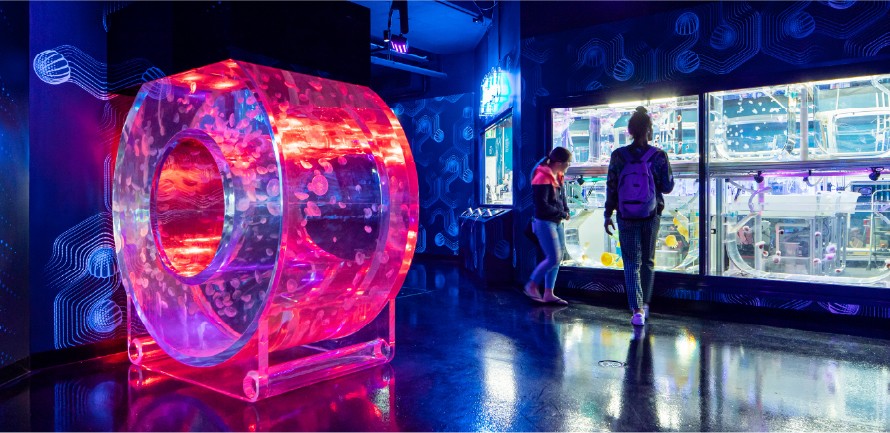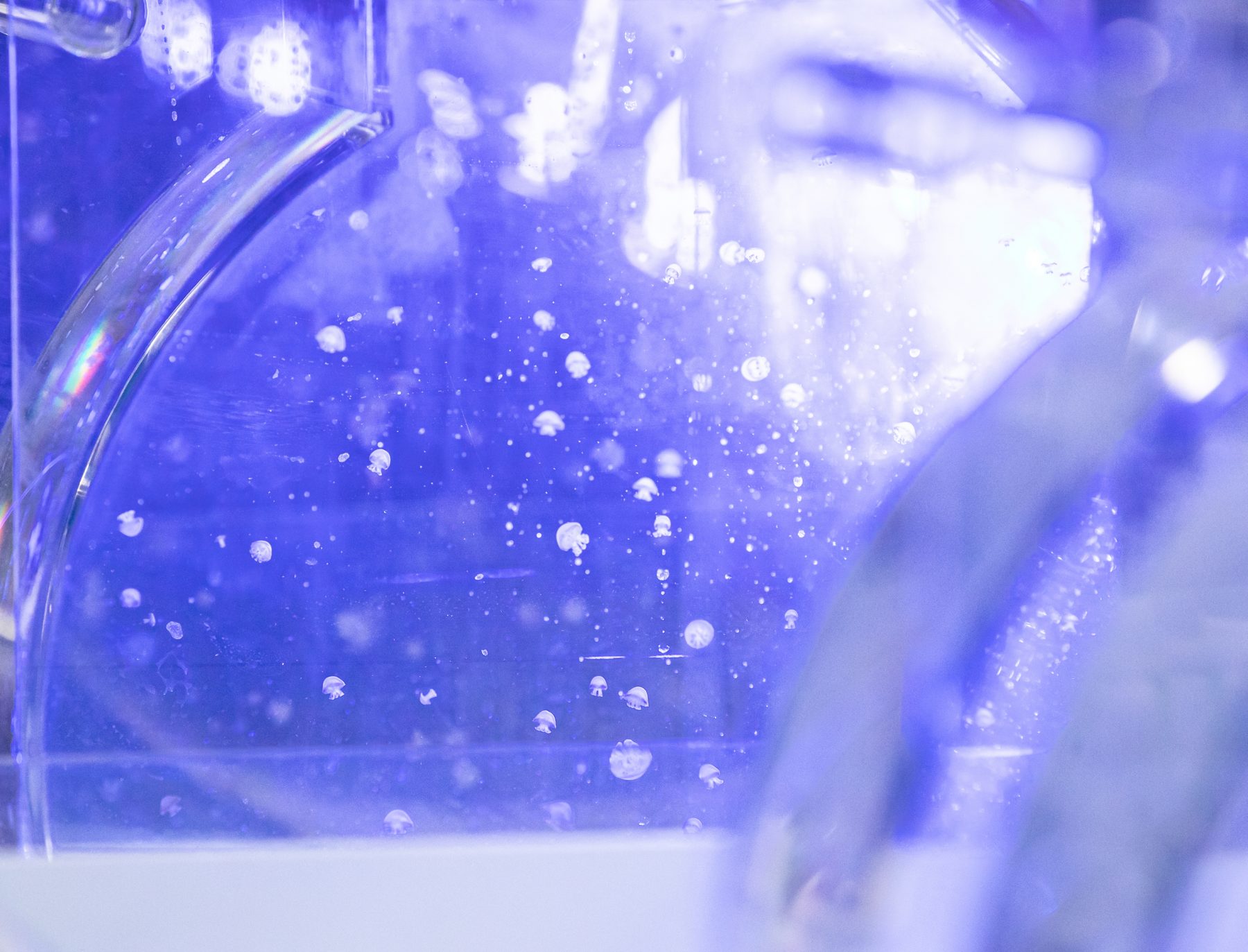Fun fact? Jelly fish aren’t ‘born’ – they’re cultured, says Curator of Sea Life Melbourne, Paul Hale. “We culture them in-house by changing the temperature of the water to give them a summer and a winter. Basically, they reproduce in the tanks, we collect the juveniles, grow them to becomes adults and the adults produce eggs – which go through a seasonal change to become juveniles. It’s a complicated lifecycle. We have about 2000 jellyfish in the exhibit at present, though it does vary. We’re currently working with nine species.”
The tanks the jellyfish are housed in were purpose-built to ensure they felt at home (another fact: jellyfish can’t ‘feel at home’ – they don’t have brains). “In the wild, jellyfish don’t encounter a lot of surfaces – they’re big water swimmers – so the tanks are designed to have a continuous smooth flow in them which allows the jellyfish to stay in the middle of the water column and minimises the amount of time that they touch the sides of the tanks,” explains Paul.
The Ocean Invaders project was a fascinating one for the FDC team in Victoria who had to demolish and build in the middle of a public environment. “There was an existing exhibit which we demolished first before the jellyfish exhibit was constructed. We worked in two phases. The first part of the project was establishing the jellyfish breeding facility and the lab. Phase Two was creating the interactive exhibit, where the jellyfish migrate to,” says FDC Project Manager, Martin Armit.
“Working in a live environment was a challenge since there was always a risk we could harm other species in the aquarium. We had to be conscious of safety every step of the way, making sure we weren’t contaminating the water. All of the materials we used were low VOC – we couldn’t use glues or anything that would potentially contaminate the facility. Coordination with the aquarium was critical, because there were so may moving parts.
“It was a big job, but it came together beautifully. We built all the walls, the huge floors, we had some structural work to do as well, because there was a void in the floor that required structural steel – and the walls went on top of that. We ran all the services, from the tanks to the electricity to the special water for the jellyfish,” he said. “Sea Life Aquarium is such an iconic place in Melbourne. To have worked on such an innovative project, that people will be talking about and enjoying for years to come, is incredible.”



